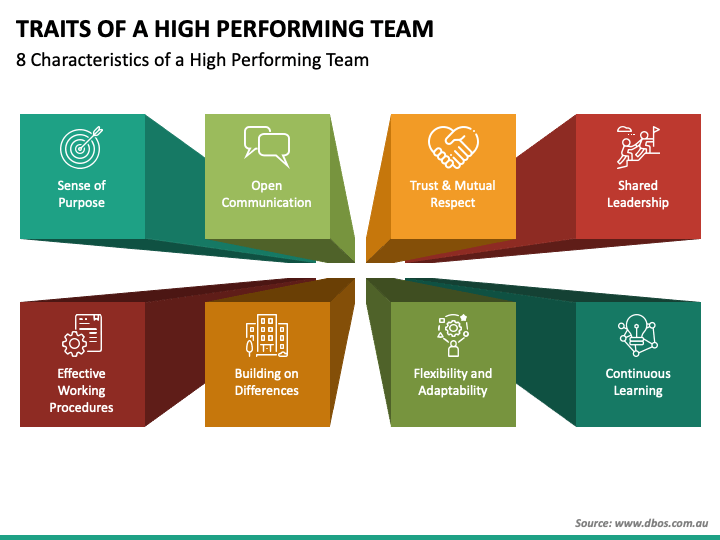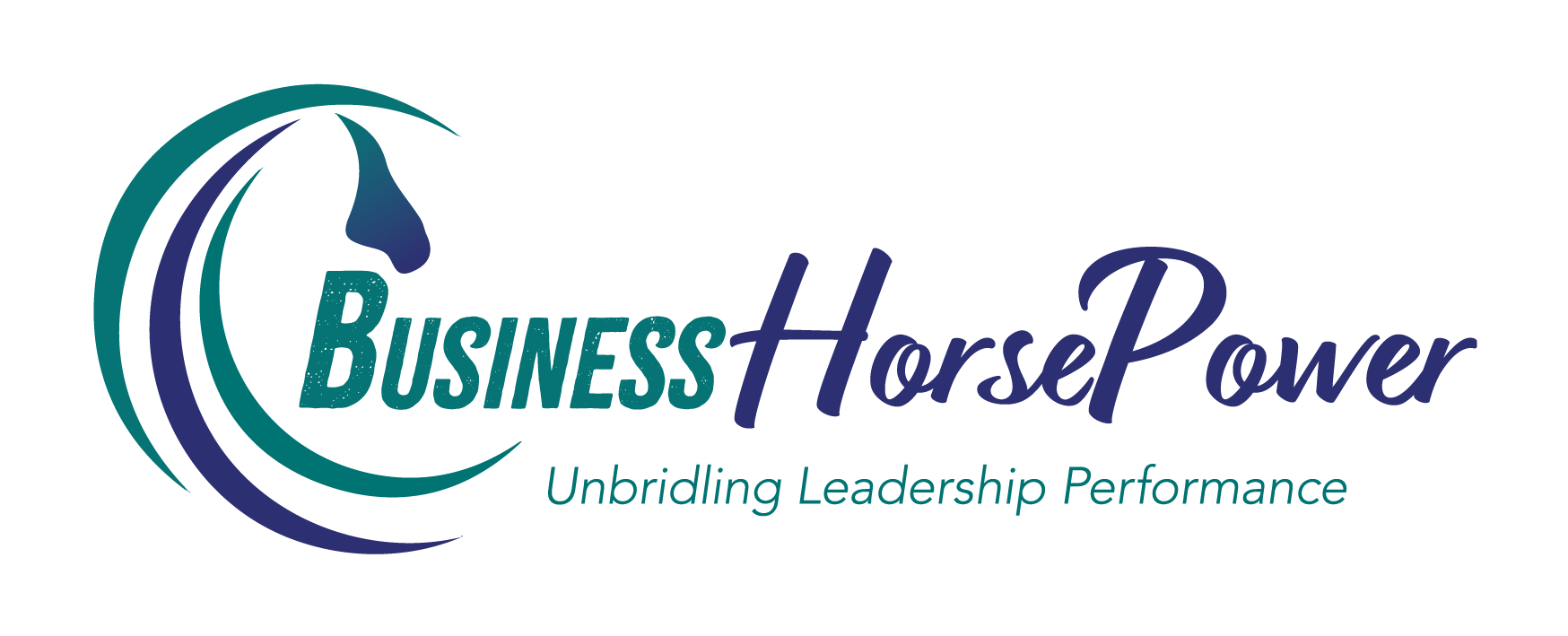
by Julia Felton | Nov 23, 2023
Increasingly leaders are beginning to understand the power that the environment plays in business and how everything that happens is interconnected. An individual, a team and an organisation do not exist in isolation but rather, they are part of a complex eco-system, where one part impacts the next.
Consequently, traditional leadership thinking that focuses on the “me rather than we” approach is becoming outdated. Great leaders understand that business is never about them and their ego but rather about how they can serve those that they work with – either directly or indirectly. This results in leaders having to adopt an eco-system mindset.
So what is an eco-system mindset?
An eco-system mindset involves having an ‘outside in’ perspective. It means that rather than thinking first about self and team and then what could come from partnering with other individuals and teams, the ecosystem mindset turns this on its head and looks at the vision, purpose and strategy for the whole, and then sees the parts that individuals and teams could contribute.
This can be challenging because at some point, an individual or team may need to step aside for the good of the ecosystem, something not everyone is ready to embrace yet. However, when individuals and teams adopt an eco-system mindset, they are better positioned to accept or even make this choice because they are able to see additional opportunities where they can contribute and make an impact.
Amy Edmondson, in her book Teaming, writes that ‘fast-moving work environments need people who know how to team, people who have the skills and flexibility to act in moments of potential collaboration when and where they appear.’
In the VUCA world in which we will, where adaptability and flexibility are key to navigating uncertainty, the eco-system mindset focuses on opportunities for hyper-collaboration, where the people, projects, and even the processes and approaches that are prioritised shift constantly. In this environment, rather than focusing on team effectiveness at the level of the team, it is more effective to develop teaming skills in every individual.
Then, no matter which team a person is on, they can contribute to its success by bringing their skills for being an effective team member. The effectiveness of a team where all team members bring a teaming skillset never depends on just one person, making it resilient in the face of the changes and challenges hyper-collaboration brings.
The development of the COVID vaccine is one such example. No one company had the answer in isolation but by working together, there were many partnerships were formed, some of them quite unlikely, that allowed this innovative vaccine to be created and made available in such a short time frame.
Hyper-collaboration is a concept based on the belief that most effective team outputs will result from collaborations with other, sometimes unexpected, partners. Partners that have a completely new perspective on the current issues we are facing. This diversity and variety of complementary capabilities coming together to solve a particular problem create success rather than stability and longevity.
If you thought about challenges this way, and knew that a solution already existed somewhere, but most likely not in the first place you looked, how would that change your approach?
Cracking The Code
Four avenues that you might want to explore:
- Look for the unexpected: consciously think outside the box and explore opportunities and partnerships in other industries/sectors
- Expand your reach: when it comes to hyper-collaboration it’s a case of the more the merrier. The more diverse the perspective the more opportunities for a significant breakthrough. Sure, more partners is challenging to manage but the benefits significantly outweigh the challenges.
- What new technology can you adopt: when used appropriately technology can be a great enabler of change, so what technology can you apply from related industries to help solve your problems.
- Embrace change: the only certainty is that there will be change so make sure to inform and educate all stakeholders about what is happening and ensure they understand how this relates to the overall purpose and mission of the business.
Finally, given the increasingly complicated needs we are facing, in our teams, organisations, regions, and even in the world, hyper-collaboration is likely to increase even further. We can prepare people for successful hyper-collaboration by building an eco-system mindset and teaming skills in everyone in our organisation.
This is not something that will happen overnight, but with consistent action we can help move the needle and in doing so create empowered, productive teams that are agile and can respond to the uncertain conditions in which we all now live.
Julia Felton (aka The Business Wrangler) is the founder of Business HorsePower. Business leaders, entrepreneurs and executives hire her to accelerate their business performance by harnessing the energy of their people to work more collaboratively together. By aligning purpose with actions the team achieves exponential results as everyone starts pulling in the same direction.
Julia believes that business is a force for good and through designing purpose-driven businesses that leverage the laws of nature, and the herd, you can create businesses founded on the principles of connection, collaboration and community that make a significant impact in the world.

by Julia Felton | Oct 10, 2023
In the fast-paced and ever-evolving landscape of today’s business world, a company’s success often hinges on the collective capabilities of its teams. As a business leader, you understand the importance of investing in your team’s growth and development. One essential aspect that should not be overlooked is Team Emotional Intelligence (Team EQ).
Team-level emotional intelligence, or Team EQ, refers to a group’s ability to interact harmoniously, both internally among team members and externally with individuals from other departments, teams, and even outside the organization. Teams that excel in Team EQ not only recognise unproductive emotions when they surface but also manage them constructively, paving the way to overcome interpersonal and inter-team challenges and achieve peak performance.
Research has shown that teams with strong EQ skills are more adept at navigating challenges, making effective decisions, and ultimately achieving peak performance. So, the question arises: How can you improve the performance of your team through Team Emotional Intelligence?
The case for team emotional intelligence
Teams are the backbone of any organisation, and they consist of individuals with varying levels of emotional intelligence. To unlock your team’s full potential, it’s imperative to provide them with opportunities to develop emotional intelligence skills collectively. Team EQ goes beyond individual emotional awareness; it involves the ability of team members to interact harmoniously within the group, across departments, and even outside the organization. Teams that excel in Team EQ can recognise and manage unproductive emotions constructively, surmount interpersonal and inter-team challenges, and achieve exceptional results.
Highly emotionally intelligent teams offer a plethora of benefits, including better decision-making, fostering a positive work environment, and increased adaptability to unforeseen changes such as virtual work environments, personnel shifts, shifting priorities, or intensified competition.
The 4 core team EQ skills
To harness the power of Team Emotional Intelligence effectively, it’s vital to understand the four core skills that make up a high EQ team:
- Emotion Awareness: Team members are attuned to their own emotions.
- Emotion Management: They can manage their emotions effectively.
- Internal Relationship Management: Positive working relationships are nurtured within the team.
- External Relationship Management: Team members can build relationships outside the team.
Team EQ skills in action
Consider the example of nursing teams, where high levels of Team EQ are paramount. Emotion awareness and management are crucial in high-stress, fast-paced environments where decisions can have life-altering consequences. Teams with strong internal relationship management can work cohesively and efficiently, supporting each other during extended shifts or demanding situations. External relationship management ensures compassionate care for patients and their families, leading to higher patient care ratings.
Components of team emotional intelligence
Team EQ serves as the foundation for a host of critical skills, including effective communication, empathy, and influence. Understanding and respecting teammates’ emotions enhance a team’s ability to work collaboratively and adapt swiftly to change.
From insights to action
Perhaps the most encouraging insight from EQ research is that Team EQ skills can be developed over time. This means that teams that initially score low in Team EQ can make significant improvements within six months to a year with dedicated practice. This holds true across professions and industries, making it a universally applicable concept.
As a business leader, investing in your team’s emotional intelligence is an investment in your organisation’s success. By nurturing Team Emotional Intelligence, you empower your teams to overcome challenges, foster positive working environments, and adapt gracefully to the ever-changing business landscape.
The result? Improved team performance and a brighter future for your company.
Julia Felton (aka The Business Wrangler) is the founder of Business HorsePower. Business leaders, entrepreneurs and executives hire her to accelerate their business performance by harnessing the energy of their people to work more collaboratively together. By aligning purpose with actions the team achieves exponential results as everyone starts pulling in the same direction.
Julia believes that business is a force for good and through designing purpose-driven businesses that leverage the laws of nature, and the herd, you can create businesses founded on the principles of connection, collaboration and community that make a significant impact in the world.

by Julia Felton | Sep 12, 2023
The three psychological needs essential in a high-performing team are autonomy, competence, and relatedness.
Of these, relatedness, or the desire to feel connected to others, has always been the trickiest for organisations to cultivate. It’s one thing to attract talented employees — but how exactly do you get them to like each other? When people feel psychologically fulfilled, they tend to be healthier, happier, and more productive.
Here are the 8 characteristics of a high-performing team with strong ‘relatedness’
- Sense of Purpose:
Individuals with a sense of purpose have clearly defined their mission and goals since the beginning. These people have set their eyes on the priorities and are driven with a strong focus on results and solution.
- Open Communication:
One of the most important characteristics of a high-performing team is open communication. Members who are not afraid to express their ideas and thoughts, as well as listen to what others have to say, are indeed professionals.
- Trust and Mutual Respect:
Respect and trust are two words that correlate with each other. In a professional setting, a leader and its followers do exist. As part of a team, both should learn how to trust and respect each other.
- Shared Leadership:
An effective leader asks for ideas and suggestions from their members. They value their team’s insights and are not autocratic. This kind of leader understands the key role of their members.
- Effective Working Procedures:
Aside from being highly skilled, effective team leaders are also resourceful. They don’t stop at “good” but rather aim for the “best”, every chance they get. They encourage creativity and find the most outstanding way to achieve their goal.
- Building on Differences:
Efficient leaders don’t look at differences as drawbacks of an individual. Instead, they use it as a weapon to create alternatives and other approaches that may be useful in different situations.
- Flexibility and Adaptability:
A high-performing team consists of adaptable and agile individuals. Variables like a fast-paced working environment don’t scare these kinds of people for they can easily adjust to any given situation.
- Continuous Learning:
The hunger for discoveries and newly acquired knowledge is the last characteristic of a high-performing team. Their desire to learn everything that they can or what might help improve their craft is an essential matter.
A great way to help team members understand their relatedness to others is to help them appreciate the value and contribution they make to any team. We do this by measuring their energy for impact using the GC Index.
Julia Felton (aka The Business Wrangler) is the founder of Business HorsePower. Business leaders, entrepreneurs and executives hire her to accelerate their business performance by harnessing the energy of their people to work more collaboratively together. By aligning purpose with actions the team achieves exponential results as everyone starts pulling in the same direction.
Julia believes that business is a force for good and through designing purpose-driven businesses that leverage the laws of nature, and the herd, you can create businesses founded on the principles of connection, collaboration and community that make a significant impact in the world.

by Julia Felton | Aug 4, 2022
One thing that I think we can all agree on is that the last two years have changed forever the way we live and work. As much as people talk about things returning to normal after the COVID pandemic, in my opinion, they never will. Too many parameters have changed, people’s mindsets and behaviours have changed, our business processes and systems have changed, and in many cases, our entire product offering has changed and adapted to meet the ever-changing needs of our clients.
Very importantly the dynamics of our teams have changed and leaders need to become very aware of this. Leaders cannot assume that things will revert to how they were, and whilst for some leaders this might prove to be challenging, many leaders I am speaking with are excited about this opportunity which allows them to reframe how their teams operate.
Leaders have the opportunity to reinvent their teams and businesses; to start afresh rather than returning to the unhelpful behaviours and out of date approaches they once used. But what exactly is reinvention and how does it differ from change?
When you look up the term reinvention in the dictionary it says: “the action or process through which something is changed so much that it appears to be entirely new” and this contrasts with change which is defined as “to make (someone or something) different; alter or modify”.
So in essence reinvention could be defined as a radical change to creates something entirely new. Athos, Goss, Pascale in an article in the Harvard Business Review: The Reinvention Roller Coaster: Risking the Present for a Powerful Future provides the following definition:
“Reinvention is not changing what is, but creating what isn’t. A butterfly is not more caterpillar or a better or improved caterpillar; a butterfly is a different creature. Incremental change isn’t enough for many companies today. They don’t need to change what is; they need to create what isn’t.” –
For which Athos, Goss and Pascale add, “When a company reinvents itself, it must alter the underlying assumptions and invisible premises on which its decisions and actions are based. To reinvent itself, an organisation must first uncover its hidden context. Only when an organisation is threatened, losing momentum, or eager to break new ground will it conform its past and begin to understand why it must break with its outmoded present. And only then will a company’s employees come to believe in a powerful new future, a future that may seem beyond the organisation’s reach.”
Reinvention Mindsets
What is interesting for me is the different mindsets that are involved in change versus reinvention. As individuals and organisations we often continuously push back and resist change; even when we understand that change is an ongoing necessity if we are going to effectively adapt and sustain any form of continued relevance in moving forward into the future.
There are a variety of reasons as to why leaders and team members resist change and these include:
- an unwillingness to part ways with or release strategies that have led to previous success,
- lack of trust and/or relationship,
- lack of understanding or clarity in the communication of the change,
- a possible loss of individual or organisational status or hierarchy,
- lack of capacity to effectively implement the change,
- fear of the unknown, uncertainty, or failure that can accompany a change.
All of these factors must be understood and addressed if any change initiative is to take hold.
And while change is a natural, but not necessarily comfortable process, individual or organisational transformation or reinvention is not.
Re-invention requires a different mindset, a completely different level of capacity, and a very different way of considering the future, which requires new behaviours that necessitate new ways of thinking, doing, acting and being.
Just consider the massive re-invention we have seen in the hospitality industry over the last few years. Who would have ever thought that fine dining restaurants would start offering take-away service? But they have, partly out of necessity during the height of the pandemic to survive and also to meet their customer needs, and many are continuing to provide this service and in doing so have created a new revenue stream.
So, as you bring your team back together consider how can you start the re-invention process. What can you do to help the team transform and emerge stronger than before? What new practices need to be instigated? What new mindsets and behaviours need to be adopted?
Teams that succeed will initiate and embed new and exciting approaches of working together that enable them to adapt and respond to the future environment which will, in turn, lead to:
- increased cohesiveness in the face of increased complexity and pace of execution
- better collective decision making and goals
- clarity about agile ways of working that lead to success
- focus on the key priorities to drive results
- improved communication, trust and commitment to each other.
Please share what you are doing to reinvent your team and business and why not take the Unbridled Business Assessment to help you identify the key business areas that must be aligned for you to reinvent your business so you can lead it through uncertainty
Julia Felton (aka The Business Wrangler) is the founder of Business HorsePower. Business leaders, entrepreneurs and executives hire her to accelerate their business performance by harnessing the energy of their people to work more collaboratively together. By aligning purpose with actions the team achieves exponential results as everyone starts pulling in the same direction.
Julia believes that business is a force for good and through designing purpose-driven businesses that leverage the laws of nature, and the herd, you can create businesses founded on the principles of connection, collaboration and community that make a significant impact in the world.

by Julia Felton | May 3, 2022
3 May 2022, Yorkshire, UK. – Julia Felton believes in a world where rather than humanity solving the problems of nature, nature can solve the problems of humanity. She believes that there exists in nature a blueprint for a better way to live and lead businesses and she presents these findings in her latest book, Unbridled Business: Unlocking Nature’s Wisdom To Reinvent Leadership.
There is no doubt that the events of the past two years have changed everything. Even before the pandemic business needed to change but recent events have accelerated this. No longer do businesses simply need to change, they need to reinvent if they are to become agile and adaptable to navigate the uncertainty in which we now live.
We now have the opportunity to shed all the old work practices that no longer serve us and start afresh.
The challenge is that up to now there hasn’t existed a blueprint on how to do this. How do we move from the command and control leadership structures designed for the industrial age to a leadership style based on connection, collaboration and community?
Julia discovered that a solution lies in nature and herds of horses. After all, they have navigated change and survived for millions of years. In Unbridled Business, she codifies this solution into the Unbridled Business BlueprintÔ that can be used to help business leaders reinvent their business so that it is fit for purpose for the 21st century.
It all starts with Embedding The Purpose into everything you all and then Evolving The Leadership, Empowering Others To Act and Engaging The Environment and the result is Unbridled Performance. A business that can create real impact whilst delivering increased productivity, profitability and team engagement.
Why look to nature and herds of horses?
1) Adaptability – Horses have existed on the planet for over 50 million years, whilst humans have only lived here for 6 million years. They have learnt how to become agile and adapt to changing situations to survive.
2) Leading Through Uncertainty – There exists in herds of horses a model to help us lead through the uncertainty, that this VUCA world presents. It’s based on the premise of four simple steps – The Diamond Model of Leadership.
3) Shared Leadership – In this attention vying world there is simply no way that one person (typically the leader) can know everything. Now more than ever there is a need for Shared Leadership, with the best person stepping forward at the right time.
One of the biggest awakening moments for humanity from the Pandemic is that we are all inter-dependent and inter-connected. We all impact each other whether we are consciously aware of it or not. Nature has always understood the power of inter-dependency as everything works as a system in harmony together, and when something falls out of balance nature self-regulates itself to correct that imbalance. Nature understands the importance of the collective “we” rather than the “me” model of being that is so prevalent in society today.
These are all themes that Julia has addressed in her latest book Unbridled Business – Unlocking Nature’s Wisdom To Reinvent Leadership due for release 3rd May.
To book Julia for an interview today, please contact her:
Phone: +44 7710 124848
Email: connect@businesshorsepower.com
Website: www.businesshorsepower.com
Follow Her on Social Media:
www.linkedin.com/in/juliafelton
www.facebook.com/juliamfelton
www.twitter.com/julia_felton
Julia Felton (aka The Business Wrangler) is the founder of Business HorsePower. Business leaders, entrepreneurs and executives hire her to accelerate their business performance by harnessing the energy of their people to work more collaboratively together. By aligning purpose with actions the team achieves exponential results as everyone starts pulling in the same direction.
Julia believes that business is a force for good and through designing purpose-driven businesses that leverage the laws of nature, and the herd, you can create businesses founded on the principles of connection, collaboration and community that make a significant impact in the world.

by Julia Felton | May 30, 2020
There has been a lot written about the power of business having a purpose and how with a compelling purpose business can become a force for good, and yet many leaders I speak with really don’t fully comprehend what purpose is and why more than ever it is a pre-requisite for business survival.
Simply put the different between a vision (or mission) and purpose is emotion. Vision and mission statements are logical, they talk to the head part of the business. Purpose is emotional and talks to the heart of the business. So whilst vision or mission articulates goals and tactics for achieving those goals, purpose defines the essence of the business – why it exists, who it exists for and how it makes the a difference in the world.
And continuing using the metaphor of head and heart, whilst the head gets things done (20th century leadership) it is the heart that is essential to pump blood around the body, and so enable the head to operate. This is increasingly why we are seeing a paradigm shift in leadership and purposeful leaders know that the old control and command structures are not going to appeal and be successful in the more collaborative 21st century where people are seeking more purpose and contribution from their work.
A PURPOSE DRIVEN BUSINESS
Many might argue that it is a waste of time defining the company’s purpose because operating results have been fine up to now, and this is just another fad that is taking us away from delivering results. The problem is that the evidence is compelling as to why becoming a purpose driven business is essential for 21st century success. The benefits are not only commercial but also include improving the culture and the well-being of team members
JUST SOME OF THE BENEFITS INCLUDE:
- Customers Want It – 73% of consumers have stated they would change brands if a different brand of similar quality supported good causes
- Buyers Reward You – 80% of the general population would rather pay more for products and services produced ethically
- Employee Well-being – 88% of team members say they feel more fulfilled working for a business that is making a difference
- Increased Productivity – when team members are inspired by a compelling purpose they generate 225% more productivity than team members who are merely satisfied with their role
- Improved Retention and Employee Loyalty – team members who find their work rewarding and impactful report being 2.8 times more likely to stay with a company
- Easier Recruitment – 93% of employees want to work at a company that cares for them as an individual.
- Increased Revenue and Growth – in the past 3 years 85% of purpose driven companies showed positive growth whilst 42% of non-purpose led companies showed a drop in revenue.
CHANGING COMPANY CULTURE
So why wouldn’t a company want to become purpose led and help contribute to the triple bottom line of people, performance, planet? Because it’s tough. Creating a purpose driven culture demands time and resources. This is not some quick fix that can be rolled out and forgotten. Purpose needs to become imbued into the DNA of the company and impact everything that the business does. It’s not just some fancy words on the wall, but rather it demands a culture shift that helps foster an environment where people’s hidden potential can be unlocked. It helps team members understand why they work for the business and clearly articulates for them the contribution that they make. And of course for the purpose to survive the company must adopt behaviors that align with that purpose.
It is the leaders role to activate the purpose within the business and galvanize the team members to come along. Through their behaviors day in and out they help inspire and motivate the team and when they do the result is a highly engaged and productive workforce. Team member well-being improves as they feel more valued in the business and also because they understand the context in which the business is operating and how they contribute to this.
Creating a purpose driven culture really is a win-win for both the business results and the many business stakeholders, but implementing this is not for the feint of heart, and should not be undertaken without a solid commitment to see it through.
Julia Felton (aka The Business Wrangler) is the founder of Business HorsePower. Business leaders, entrepreneurs and executives hire her to accelerate their business performance by harnessing the energy of their people to work more collaboratively together. By aligning purpose with actions the team achieves exponential results as everyone starts pulling in the same direction.
Julia believes that business is a force for good and through designing purpose-driven businesses that leverage the laws of nature, and the herd, you can create businesses founded on the principles of connection, collaboration and community that make a significant impact in the world.

by Julia Felton | Jan 31, 2019
Did you know there are seven universal laws that influence everything we do? Great leaders do, and they also understand how to leverage these laws to create maximum impact. Since everything in the world is interconnected, whatever you do has an impact on someone else. It’s merely a question of whether you are impacting others positively or negatively.
The seven universal laws show us how energy operates on a daily basis in our lives.
- The Law of Perpetual Transmutation of Energy
Everything is energy and constantly changing
Energy is constantly changing form from one state to another, which means that nothing is as it seems. The human body renews its entire skin every 2-3 weeks, so whilst it appears the same, it is actually made up of entirely new cells. This means, as leaders, we are constantly dealing with change; and it is not something to be feared but rather something to embrace.
- The Law of Vibration and Attraction
Everything in our universe continually vibrates and moves.
Vibrations of the same frequency resonate with each other, so like attracts like energy. Everything is energy, including your thoughts. Consistently focusing on a particular thought or idea attracts its vibrational match. Great leaders leverage this law by focusing on what they want instead of what they don’t want.
- The Law of Polarity
Everything in the universe has an equal and exact opposite.
In Eastern philosophy, this law is referred to as the yin and yang, and it alludes to the fact that a polar opposite exists for every situation. This is reassuring for leaders when there are challenging times, because it means that things can only get better in due course.
- The Law of Rhythm
Everything is moving in perfect rhythm and at perfect speed
When we look at the natural world, everything has a rhythm to it. There is a rhythm to the seasons; they always come and go in the same order. There is a rhythm to the rising and the setting of the sun, and the ocean has its own ebb and flow. Even our heartbeat has a natural rhythm to it; and yet all too often, business leaders try to defy this law. They put their foot to the pedal, working day in and day out, increasing stress levels and never resting and recuperating. In the worst cases, this can result in a heart attack as their heartbeat flat lines. Devoid of a rhythm, the body can no longer sustain life.
- The Law of Relativity
Everything is relative
We have become masters at comparing ourselves to others. In business, we compare our financial performance against the prior year, and we often benchmark our performance against our peer group. Team members compare their performance with that of their colleagues, and their personal success with that of their friends. The irony is that this direct comparison is often flawed, because everything is relative based on our own past experiences, personal values, and experiences. There is no such thing as wrong or right, it just is.
- The Law of Cause and Effect
For every cause there is an effect and for every effect there is a cause
According to physics, there is an equal and opposite reaction for every action. Therefore, nothing happens by chance and anything you “cause” is the “effect” of something that came before. Good leaders appreciate that what they sow, they reap, so they say good things to everyone and treat others with respect so it will come back to them.
- The Law of Gestation
Everything takes time to manifest
Nothing is ever created or destroyed; rather, all new things are a result of something that already exists. There is a gestation period to the creation of everything, and therefore a correct time and place for everything to happen. Many business owners give up too early, before the gestation period has had time to elapse, which is just like digging up bulbs before the plants have had the opportunity to flower
Remember: the universal laws are operating all the time, so ensure you leverage them – because if you don’t, they will operate against you.
Julia Felton (aka The Business Wrangler) is the founder of Business HorsePower. Business leaders, entrepreneurs and executives hire her to accelerate their business performance by harnessing the energy of their people to work more collaboratively together. By aligning purpose with actions the team achieves exponential results as everyone starts pulling in the same direction.
Julia believes that business is a force for good and through designing purpose-driven businesses that leverage the laws of nature, and the herd, you can create businesses founded on the principles of connection, collaboration and community that make a significant impact in the world.

by Julia Felton | Nov 12, 2018
Small and medium-sized businesses are the life-blood of our economy, but they face specific, ever-increasing challenges. The world is in the mists of an employee engagement crisis, with serious and potentially lasting repercussions for the global economy.
Without a doubt, one of the greatest challenges SME’s currently face is the attraction and retention of talent. Intelligent, honest, hard working staff are critical to an organisation’s ongoing success, but now more than ever, good people are hard to find – and they are even harder to hold on to! To ensure employee job fulfilment, loyalty and maximum ROI, the key ingredient that is so often missing is Engagement.
In a recent Gallup poll, it was revealed that only 13% of the world’s employees are engaged at work, and most disengaged employees would change employers right now for as little as a 5% pay increase.
- The Engaged Employee – Does more than is expected. Works with a passion and feels a profound connection to the organisation they work for. They drive innovation and move the organisation forwards, providing maximum return on salary investment
- The Disengaged Employee – Does just what’s expected. Is essentially there in body only. They’re sleep walking through their day. Marking time, but not energy or passion, into their work. They provide minimum return on salary investment
- The Actively Disengaged Employee – Does less than expected. They aren’t happy at work; they’re busy acting out their unhappiness. Every day these workers undermine the efforts of their engaged co-workers, often providing negative return on salary investment.
Many organisations believe that strong leadership, and an exclusive focus on the development of their leaders is the key to a winning culture. They are mistaken. Leadership is not the heart of your organisation. The heart of your organisation is its people and their contribution. Without actively engaged employees, the leadership message cannot be heard..
Trained leaders today have been overloaded with leadership knowledge and theory, but too often they are not sufficiently activated. We need to turn our attention equally to our staff, getting them actively engaged regularly through new, innovative and inclusive methods, thus creating shared vision and buy in. It’s called ‘leadership living’ and all levels of the organisation participate together in the workplace. It is an all action methodology, which means all team members will live, breathe and grow together as a united force. It breeds true engagement, uncovers more leaders and builds a powerful and united culture. To ensure maximum impact and lasting change, everyone needs to be involved and everyone needs to be accountable.
So how do we engage our staff, encouraging maximum productivity, loyalty and ROI? It starts with changing habits as a collective, creating a movement. It’s about working as a unified team to change everyone’s individual and collective behaviours. The only way you can do this is through structured, strategic and regular discussions built on shared ownership, individual empowerment, and regular feedback sessions.
Also, traditional hierarchy has to go. The traditional organisational structure is not the most efficient option for businesses in the 21st century. Instead, successful companies are moving to an organisational structure that allows employees to make more of their own decisions and avoid the rigidity of traditional models. Generations X, Y and Z respond and are motivated differently to Baby Boomers. Equality creates unity, and unity will bring the truth out in your organisation. Think of truth as the splinters that need to be removed from your business. It may hurt, but we need to hear it, otherwise the pain will continue and exacerbate. We need to create an atmosphere for the truth to be tabled discussed and addressed without judgement.
If you want to get more engagement in your team why not grab a copy of our new online training course. For a limited time you can get free access using the COUPON CODE JF2 at check out. Simply register at https://www.engageandgrow.com.au/video-course
Julia Felton (aka The Business Wrangler) is the founder of Business HorsePower. Business leaders, entrepreneurs and executives hire her to accelerate their business performance by harnessing the energy of their people to work more collaboratively together. By aligning purpose with actions the team achieves exponential results as everyone starts pulling in the same direction.
Julia believes that business is a force for good and through designing purpose-driven businesses that leverage the laws of nature, and the herd, you can create businesses founded on the principles of connection, collaboration and community that make a significant impact in the world.

by Julia Felton | Sep 12, 2018
A recent study by accountants Haines Watt reveals that finding and creating a management team that are fully aligned with the business owners vision and purpose can be really challenging. Often it seems that creating such a team is far out of reach. There are two main reasons why your management team might not be aligned.
- you don’t have the right people at the management table,
- lack of clarity of the business purpose and mission caused by a lack of planning, or strategic focus.
The fact is, UK business owners are not spending enough time on their business, rather they are spending a vast majority of their time in the business. This focus on the day-to-day is preventing business owners from planning effectively. And here’s the rub. Failing to plan is planning to fail.
A properly formed strategic plan can ensure businesses grow faster and more sustainably. In fact, our study validated that business owners who are able to step back and focus predominantly on strategic planning are twice as likely to run fast growth businesses.
Developing a fully formed, strategic plan ultimately frees up more time to drive towards a common purpose and innovate along the way. Unfortunately, UK business owners are holding too tightly to the everyday functions of their companies, reluctant to let the management teams, who should be at the heart of the company, take their rightful place.
The theoretical role of the management team is a far cry from reality. The study found that nearly half of business owners are not confident that their business could survive beyond a single week if their team were left to run it. Wow, what a revelation and a telling sign of how little trust business owners put in their team. Imagine too the stress that creates for you, the business owner, when you feel that you are single handedly shouldering the responsibility for the business.
One of the most telling findings in the research was a widespread fear of exposing vulnerability, with business owners refusing to open up to their management team regarding their concerns or future plans. Without enough communication, the result is siloed working, leading to, and exacerbating, a lack of coordination within the team.While the causes of disunity can vary, the result remains the same – stagnated business growth. It is imperative that business owners make the time to identify the aspirations they hold for the business they’ve built. Once identified they can strategically look towards the future and place their management team at the centre of that vision.
If you’d like to get clarity on your purpose then let’s schedule a chat, because without a clear purpose your business will just drift along and never achieve its full potential and you will be unable to leverage the full potential of your team.
Julia Felton (aka The Business Wrangler) is the founder of Business HorsePower. Business leaders, entrepreneurs and executives hire her to accelerate their business performance by harnessing the energy of their people to work more collaboratively together. By aligning purpose with actions the team achieves exponential results as everyone starts pulling in the same direction.
Julia believes that business is a force for good and through designing purpose-driven businesses that leverage the laws of nature, and the herd, you can create businesses founded on the principles of connection, collaboration and community that make a significant impact in the world.

by Julia Felton | Jul 31, 2018
Many traditional corporate organisations are struggling to adapt to the demands of the new world rapidly changing around them. They are clinging to the same ideas, talent management models, and ways of working with leaders who are either oblivious to the current mindset or too frightened to instigate change.
Research by the GC Index indicates that there are individuals who have the potential to initiate change and drive transformation, but they are rarely able to make their mark in the corporate world. They are often viewed as disruptive since they challenge the status quo. Exactly what is required for change? Within the GC Index, these individuals are called Game Changers.
Game-changing is different than innovation.
Innovators build on what has been done before — for example, the pursuit of excellence through continuous improvement and incremental change. It’s Game Changers who can trigger and drive transformational change; however, the reality is that many organisations are driving their vision through the need for innovation. Often this is delivered in quite a controlled way, by investing in innovation hubs, labs, processes, and programmes.
Game Changers have the potential to really motivate and inspire others, while displaying an incredible work ethic and dedication, but only when others understand them and what they can contribute. To thrive they need to be set free in a culture where it is “safe to fail.” Where leaders value game-changing ideas rather than innovation.
Unless understood, there are five ways that Change Makers can be seen to be disruptive in organisations.
1) Game Changers are driven by Hierarchy and Stifled by Rules
The stronger the Game Changer inclination, the more they will feel constrained by arbitrary rules and only conform to rules that make sense to them. Since Game Changers are not bothered about status or climbing the corporate ladder, it can be challenging for leaders to retain them within the traditional organisational structures.
2) Game Changers Alienate People
Naturally obsessive, Change Makers are often seen by others as being difficult. Tenacious and persistent, they are repeatedly challenging how things are done and seeking for ways to transform the future.
3) Game Changers See Things Differently
Game Changers are unafraid of failure because they seem to have an inherent belief in their ability to survive. They take on projects that others would view as risky, since their level of risk assessment is very different from many organisational norms. As a result they are often described as disruptive, yet ironically, they are the very people who can instigate change.
4) Game Changers Are Obsessive
When a Game Changer decides to do something, they do not give up on it. This obsessive compulsion can frustrate colleagues, especially when others feel they are driving through change just for the sake of it. For organisations to leverage the strength of Game Changers, they need to allow them a platform to share their ideas and then the freedom to fail. Only through failure will success ultimately ensue.
5) Game Changers See Round Corners
Game Changers always ask “why not” and are prepared to challenge the status quo. They don’t use the past to predict the future, but rather think laterally and very creatively. They don’t necessarily value the tried and tested, but rather seek out solutions that others would instantly believe not possible. Leaders need to be clear about the Game Changer’s talents and leverage these to best effect.
The GC Index research helps explain the irony that exists for Game Changers, as they often find it difficult to survive and thrive in traditional “controlling” corporate structures that don’t value creativity, and so the very organisations that they could help struggle to retain them or realise their full potential.
As one Game Changer noted:
“I lost heart and felt claustrophobic. . . . there was too much red tape, too many barriers and too many people ready to dismiss my ideas without listening to them.”
So if you’re a leader, I urge you to reflect on who the Game Changers are in your team. What can you do to support their success, and ultimately, that of the organisation?
Not sure who your Game Changers are, then why not take the Change Maker Assessment to discover what type of Change Maker you are. There are five by the way. Simply get in touch with me at julia@businesshorsepower.com.
Julia Felton (aka The Business Wrangler) is the founder of Business HorsePower. Business leaders, entrepreneurs and executives hire her to accelerate their business performance by harnessing the energy of their people to work more collaboratively together. By aligning purpose with actions the team achieves exponential results as everyone starts pulling in the same direction.
Julia believes that business is a force for good and through designing purpose-driven businesses that leverage the laws of nature, and the herd, you can create businesses founded on the principles of connection, collaboration and community that make a significant impact in the world.
















